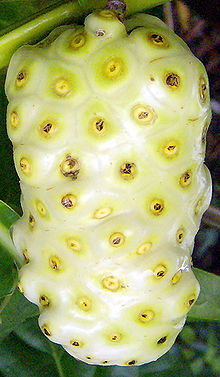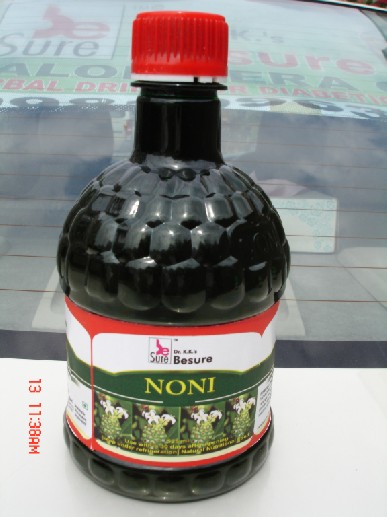- PORTADA
- PÁGINA PERSONAL
- MIEMBROS
- BLOGS
- FORO
- FOTOS
- VIDEOS
- GRUPOS
- LOSmásPOPULARES
- SONETOS
- JUEVES DE MUSA Y CANTO
- LITERATURA INFANTIL
- ERÓTICOS
- DUETOS Y MÁS
- CUMPLEAÑOS
- ARTES PLÁSTICAS
- ANTIPOEMAS
- CINE DE SIEMPRE
- POR LA PAZ
- ACRÓSTICOS Y CALIGRAMAS
- ANTOLOGÍA DE LA IMAGEN
- INTERCAMBIOS
- UNIVERSO HAIKU
- CARTAS DE AMOR
- FIESTA DEL AMOR
- LETRAS PARA MAMÁ
- LOS NIÑOS BENDITOS
- HOMENAJE AL POETA
- POESÍA A MADRE-TIERRA
- A LA MUJER
- POESÍA PARA TODOS
- TRADICIONES
- MITOS Y LEYENDAS
- CUENTOS NAVIDEÑOS
- CONCIENCIA SOCIAL
- TEATRO
- CIENCIA FICCIÓN
- EL PODER DE LA METÁFORA
- TANGOS Y MILONGAS
- MICROCUENTOS
- CHISTES Y CHIRIGOTAS
- ANTROPOLOGÍA-CIENCIA
- VENEZUELA
- EVENTOS
- BANCO DE IMÁGENES
- CHAT
- HAZ tu DONATIVO
UNA FRUTA REALMENTE FUERA DE SERIE, LLAMADA NONI, ES ORIUNDA DE LAS ISLAS DE HAWAI, CON INCREIBLES PODERE SANADORES!!!!
Mis estimados amigos, les comunico que como Naturista, estoy con una de las representaciones de este producto, asi que los interesados, podran comunicarse conmigo, ya sea escribiendo a rolandovides@yahoo.com o llamando al (502) 578.413.99 en Guatemala,Guatemala.
Y CON GUSTO LES ENVIAREMOS LOS PRECIOS Y LA FORMA DE COMO PODRAN ADQUIRIRLO.
ESTO ES EN GUATEMALA, SI FUERA PARA EXPORTAR COMUNIQUENSE SIEMPRE VEREMOS COMO LOS AYUDAMOS.
MARIO VIDES.
Morinda citrifolia
| The neutrality of this article is disputed. Please see the discussion on the talk page. Please do not remove this message until the dispute is resolved. (January 2011) |
| Morinda citrifolia | |
|---|---|
 |
|
| Leaves and fruit | |
| Scientific classification | |
| Kingdom: | Plantae |
| (unranked): | Angiosperms |
| (unranked): | Eudicots |
| (unranked): | Asterids |
| Order: | Gentianales |
| Family: | Rubiaceae |
| Genus: | Morinda |
| Species: | M. citrifolia |
| Binomial name | |
| Morinda citrifolia L. |
|
Morinda citrifolia, commonly known as great morinda, Indian mulberry, nunaakai (Tamil Nadu, India) , dog dumpling (Barbados), mengkudu (Indonesia and Malaysia), Kumudu (Balinese), pace (Javanese), beach mulberry, cheese fruit[1] or noni (from Hawaiian) is a tree in the coffee family, Rubiaceae. Morinda citrifolia is native from Southeast Asia to Australia and is now distributed throughout the tropics.[2]
[edit] Growing habitats
Noni grows in shady forests as well as on open rocky or sandy shores. It reaches maturity in about 18 months and then yields between 4–8 kilograms (8.8–18 lb) of fruit every month throughout the year. It is tolerant of saline soils, drought conditions, and secondary soils. It is therefore found in a wide variety of habitats: volcanic terrains, lava-strewn coasts, and clearings or limestone outcrops. It can grow up to 9 metres (30 ft) tall, and has large, simple, dark green, shiny and deeply veined leaves.
The plant bears flowers and fruits all year round. The fruit is a multiple fruit that has a pungent odour when ripening, and is hence also known as cheese fruit or even vomit fruit. It is oval in shape and reaches 4–7 centimetres (1.6–2.8 in) size. At first green, the fruit turns yellow then almost white as it ripens. It contains many seeds. It is sometimes called starvation fruit. Despite its strong smell and bitter taste, the fruit is nevertheless eaten as a famine food[3] and, in some Pacific islands, even a staple food, either raw or cooked.[4] Southeast Asians and Australian Aborigines consume the fruit raw with salt or cook it with curry. The seeds are edible when roasted.
The noni is especially attractive to weaver ants, which make nests out of the leaves of the tree. These ants protect the plant from some plant-parasitic insects. The smell of the fruit also attracts fruit bats, which aid in dispersing the seeds.
[edit] Nutrients and phytochemicals

Noni fruit powder is high in carbohydrates and dietary fibre. According to the College of Tropical Agriculture and Human Resources at the University of Hawaii at Mānoa, a 100 g sample of the powder contains 71% carbohydrate and 36% fibre. The sample also contained 5.2% protein and 1.2% fat.[5]
These macronutrients evidently reside in the fruit pulp, as noni juice has sparse amounts of macronutrients.[6]
The main micronutrients of noni pulp powder include 9.8 mg of vitamin C per 1200 mg sample, as well as 0.048 mg niacin (vitamin B3), 0.02 mg iron and 32.0 mg potassium.[5] Vitamin A, calcium and sodium are present in moderate amounts.
When noni juice alone is analyzed and compared to pulp powder, only vitamin C is retained at a high level, 33.6 mg per 100 g of juice.[6]
Although the most significant nutrient feature of noni pulp powder or juice is its high vitamin C content, noni fruit juice provides only about half the vitamin C of a raw navel orange.[7] Sodium levels in noni juice (about 3% of DRI)[5] are high compared to an orange. Although the potassium content appears relatively high for noni, this total is only about 3% of the Recommended Dietary Allowance and so would not be considered excessive. Noni juice is otherwise similar in micronutrient content to a raw orange.[7]
Noni fruit contains a number of phytochemicals, including lignans, oligo- and polysaccharides, flavonoids, iridoids, fatty acids, scopoletin, catechin, beta-sitosterol, damnacanthal, and alkaloids. Although these substances have been studied for bioactivity, current research does not conclude anything about their effects on human health.[8][9][10][11][12]
These phytochemicals are not unique to noni, as they exist in various plants.
[edit] Possible medicinal properties
Noni has been evaluated unsuccessfully in preliminary clinical trials for possible use in treating cancer,[13] although the US National Cancer Institute has undertaken further preliminary studies for potential preventive effects against breast cancer.[14] Since 2007, there have been no other registered clinical trials on potential health benefits or anti-disease effects of noni[15] which remains scientifically undefined for any effect on human health.[14]
[edit] Traditional medicine
The green fruit, leaves and the root/rhizome were traditionally used to treat menstrual cramps, bowel irregularities, used to treat diabetes,liver diseases and urinary tract infections.[13]
[edit] Consumer applications
The bark of the great morinda produces a brownish-purplish dye for batik making. In Hawaii, yellowish dye is extracted from its roots to dye cloth.[16]
There have been recent applications for the use of noni seed oil[17] which contains linoleic acid possibly useful when applied topically to skin, e.g., anti-inflammation, acne reduction, moisture retention.[18][19][20]
[edit] See also
- Tahitian Noni International -- A multi level marketing scheme selling sweetened Noni juice, based in Provo Utah.
- Noni juice
[edit] References
- ^ Plants by Common Name — James Cook University
- ^ Nelson, SC (2006-04-01). "Species Profiles for Pacific Island Agroforestry: Morinda citrifolia (noni)". http://traditionaltree.org.
- ^ Krauss, BH (1993). Plants in Hawaiian Culture. Honolulu: University of Hawaii Press.
- ^ Morton, JF (1992). "The Ocean-Going Noni, or Indian Mulberry (Morinda citrifolia, Rubiaceae) and Some of its "Colorful" Relatives". Economic Botany (New York) 46 (3): 241–256.
- ^ a b c Nelson, Scot C. (2006) "Nutritional Analysis of Hawaiian Noni (Noni Fruit Powder)" The Noni Website. Retrieved 15-06-2009.
- ^ a b Nelson, Scot C. (2006) "Nutritional Analysis of Hawaiian Noni (Pure Noni Fruit Juice)" The Noni Website. Retrieved 15-06-2009.
- ^ a b World's Healthiest Foods, in-depth nutrient analysis of a raw orange
- ^ Saleem, M; Kim, HJ; Ali, MS; Lee, YS (2005). "An update on bioactive plant lignans". Nat Prod Rep 22 (6): 696–716. doi:10.1039/b514045p. PMID 16311631.
- ^ Deng S, Palu AK, West BJ, et al. (2007). "Lipoxygenase inhibitory constituents of the fruits of noni (Morinda citrifolia) collected in Tahiti". J Nat Prod 70 (5): 859–862. doi:10.1021/np0605539. PMID 17378609.
- ^ Lin CF, Ni CL, Huang YL, et al. (2007). "Lignans and anthraquinones from the fruits of Morinda citrifolia". Natural Product Research 21 (13): 1199–1204. doi:10.1080/14786410601132451. PMID 17987501.
- ^ Levand O, Larson HO (1979). "Some chemical constituents of Morinda citrifolia". Planta Medica 36 (2): 186–7. doi:10.1055/s-0028-1097264. PMID 461575.
- ^ Mohd Zin Z, Abdul Hamid A, Osman A, et al. (2007). "Isolation and identification of antioxidative compound from fruit of mengkudu (Morinda citrifolia L.)". International Journal of Food Properties 10 (2): 363–373. doi:10.1080/10942910601052723.
- ^ a b McClatchey, Will (2002). "From Polynesian Healers to Health Food Stores: Changing Perspectives of Morinda citrifolia (Rubiaceae)" (PDF). Integrative Cancer Therapies 1 (2): 110–120. doi:10.1177/1534735402001002002. PMID 14664736. http://www.ctahr.hawaii.edu/noni/Downloads/MorindaCitrifolia.pdf.
- ^ a b "Herbs at a glance: Noni". 2010-04-10. http://nccam.nih.gov/health/noni/.
- ^ "Search for clinical trials on noni or Morinda citrifolia". 2010-04-08. http://clinicaltrials.gov/ct2/results?term=noni.
- ^ Thompson, RH (1971). Naturally Occurring Anthraquinones. New York: Academic Press.
- ^ West BJ, Jensen CJ, Westendorf J. "A new vegetable oil from noni (Morinda citrifolia) seeds". International Journal of Food Science and Technology 43 (11): 1988–92.
- ^ "Plant oils: Topical application and anti-inflammatory effects (croton oil test)". Dermatol. Monatsschr 179: 173. 1993.
- ^ Letawe,; Letawe C, Boone M, Pierard GE (March 1998). "Digital image analysis of the effect of topically applied linoleic acid on acne microcomedones". Clinical & Experimental Dermatology 23 (2): 56–8. doi:10.1046/j.1365-2230.1998.00315.x. PMID 9692305.
- ^ Darmstadt, G L; Darmstadt GL, Mao-Qiang M, Chi E, Saha SK, Ziboh VA, Black RE, Santosham M, Elias PM (2002). "Impact of topical oils on the skin barrier: possible implications for neonatal health in developing countries". Acta Paediatrica 91 (5): 546–554. doi:10.1080/080352502753711678. PMID 12113324.
[edit] Further reading
| Wikisource has the text of the 1911 Encyclopædia Britannica article Aal. |
- Noni: The Complete Guide for Consumers and Growers. Permanent Agriculture Resources. August 2006. pp. 112. ISBN 0-9702544-6-6.
- Kamiya, K.; Kamiya K, Tanaka Y, Endang H, Umar M, Satake T (September 2004). "Chemical constituents of Morinda citrifolia fruits inhibit copper-induced low-density lipoprotein oxidation". Journal of Agricultural and Food Chemistry 52 (19): 5843–8. doi:10.1021/jf040114k. PMID 15366830. ISSN 0021-8561.

[edit] External links

- "The Noni Website". 2006. http://www.ctahr.hawaii.edu/noni/.
- Thomas, Chris (August 30, 2002). "Noni No Miracle Cure". Cancerpage.com. http://www.cancerpage.com/news/article.asp?id=4799.
- Anthony, Mark. "Noni or NIMBY?". Foodprocessing.com. http://www.foodprocessing.com/articles/2007/018.html.

Contenido principal
Grupos
Videos
-
22 de mayo de 2024
Agregado por Nilo 0 Comentarios 1 Me gusta
-
24 de mayo de 2024
Agregado por Nilo 0 Comentarios 1 Me gusta
© 2025 Creada por Aimee Granado Oreña-Creadora.
Con tecnología de
![]()
Insignias | Informar un problema | Política de privacidad | Términos de servicio



¡Tienes que ser miembro de ORGANIZACION MUNDIAL DE ESCRITORES. OME para agregar comentarios!
Únete a ORGANIZACION MUNDIAL DE ESCRITORES. OME